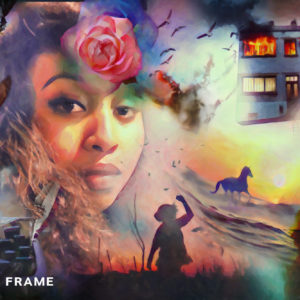Green light spells danger
In Text Messages this week, monomania takes many forms. Most deadly perhaps is Jay Gatsby’s hunt in the present for the possibility of bringing the past back to life.
Author:
23 June 2022

Monomania is at the heart of many of the world’s great novels. There is Captain Ahab’s obsessive desire to kill the great white whale, Moby Dick, in Moby-Dick. We follow Don Quixote’s single-minded pursuit of real adventure to emulate the form of knightly deeds recounted in the literature of his day. Anna Karenina succumbs to self-destructive love for her amoral and pitiless pursuer Count Alexis Vronsky. Jay Gatsby strives to recover the hope of the past and secure the promise of the future, as embodied by the green light that shines at the end of a dock across the bay in The Great Gatsby.
Ahab, Quixote, Anna and Gatsby are all destroyed by their dream, their remorseless chasing of the unattainable, and their fates prompt very diverse reactions. Readers despise Ahab even as they fear him but there can be no denying his epic monomania. Quixote is a figure to laugh with, not at, all the while admiring his irrepressible fixation with derring-do. Anna’s sudden ruling passion, escape from a loveless marriage into a world of intense ardour, ordains her doom, a ruin not unlike that which befalls Gatsby.
Scott Fitzgerald’s The Great Gatsby is the slimmest of these four classics, a flyweight set against the super-heavyweight works of Herman Melville, Miguel de Cervantes and Leo Tolstoy. And yet it packs as potent a punch and as profound a meditation on the frailties of being human and of the essential corruptibility of all human endeavour and desire. There is a difference in kind, rather than in scale, between the vast ambitions of Ahab and Quixote on one side and the search for love of Anna and Gatsby on the other. In some ways, the latter quest is the more taxing because, as one of the most rational people ever to have lived, the philosopher Blaise Pascal, noted, “The heart has its reasons which reason knows nothing of … We know the truth not only by the reason, but by the heart.”
Related article:
Gatsby sought after the truth that had been, his own very special and particular truth: Daisy Fay had loved him and he her, in October 1917 before he went off as a young lieutenant in the United States army to fight in World War I. Demobbed as a major, taking up the chance to attend Oxford University, Gatsby delayed in returning. It was a terrible error because the waiting Daisy could wait no more and was swept away by the brusque physicality and money of Tom Buchanan.
There is a wonderful line Fitzgerald wrote to describe some of Daisy’s allure. Her voice, he said, has the sound of money. To the wholly invented Jay Gatsby – really James Gatz – that tinkling was irresistible. The son of “shiftless and unsuccessful farm people” in North Dakota, he changed his name “at the age of seventeen and at the specific moment that witnessed the beginning of his career – when he saw Dan Cody’s yacht drop anchor over the most insidious flat on Lake Superior”.
Rowing across as James Gatz, he warns Cody of the danger his yacht is in. Asked his name, the youth replies “Jay Gatsby”. It is the beginning of the great Gatsby. And at this precise moment it is Fitzgerald who gives readers the major key to his protagonist and novel: “The truth was that Jay Gatsby of West Egg, Long Island, sprang from his Platonic conception of himself.”
Past perfect, future imperfect
So it is that we are dealing in nothing less than Plato’s Theory of Forms (or Ideas). For Gatsby, then, the physical world is less real, less true than that of the ideal form of which everything is just a replica. Imagine the Form or Idea of the first table: from this all other tables flow, copies that are none so real or so perfect. The present, with its possibility of meeting Daisy and rekindling their love, offers the possibility of a replica of the ideal (and idealised) past.
Gatsby is utterly in thrall to this opportunity, so much so that he shrugs off the heft of the theory: that the copy is an imperfect reproduction. The illusion and delusion are rendered by Fitzgerald’s unerring ear for dialogue in this exchange between Nick Carraway, the narrator of the novel, and Gatsby.
“I wouldn’t ask too much of her [Daisy],” I [Carraway] ventured. “You can’t repeat the past.”
“Can’t repeat the past?” he cried incredulously. “Why of course you can!”
He looked around him wildly, as if the past were lurking here in the shadow of his house, just out of reach of his hand.
Related article:
“I’m going to fix everything just the way it was before,” he said, nodding determinedly. “She’ll see.”
Re-reading The Great Gatsby yet again reminded me of a 13-year-old boy at Umhlanga Rocks in January 1974. A seaside summer holiday had brought with it the most innocent of romances with a similarly aged girl. He from Pretoria, she from Ficksburg. When parting time came, a Penguin Modern Classics copy of Gatsby passed between them. On its cover, Kees van Dongen’s evocative painting Montparno’s Blues. The boy gave his Daisy a dream of the future, never to be fulfilled, because unlike Fitzgerald he did not know that:
“Gatsby believed in the green light, the orgiastic future that year by year recedes before us. It eluded us then, but that’s no matter – tomorrow we will run faster, stretch out our arms farther … And one fine morning –
“So we beat on, boats against the current, borne back ceaselessly into the past.”


